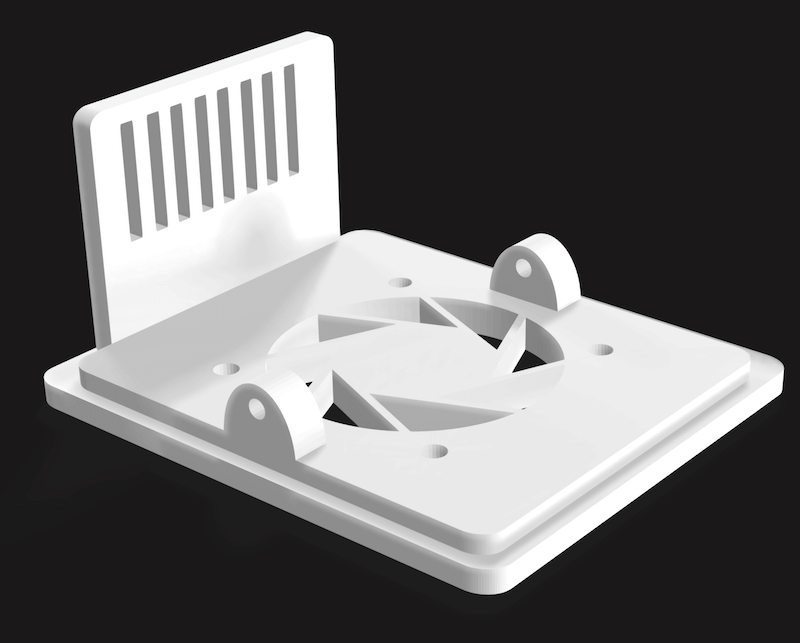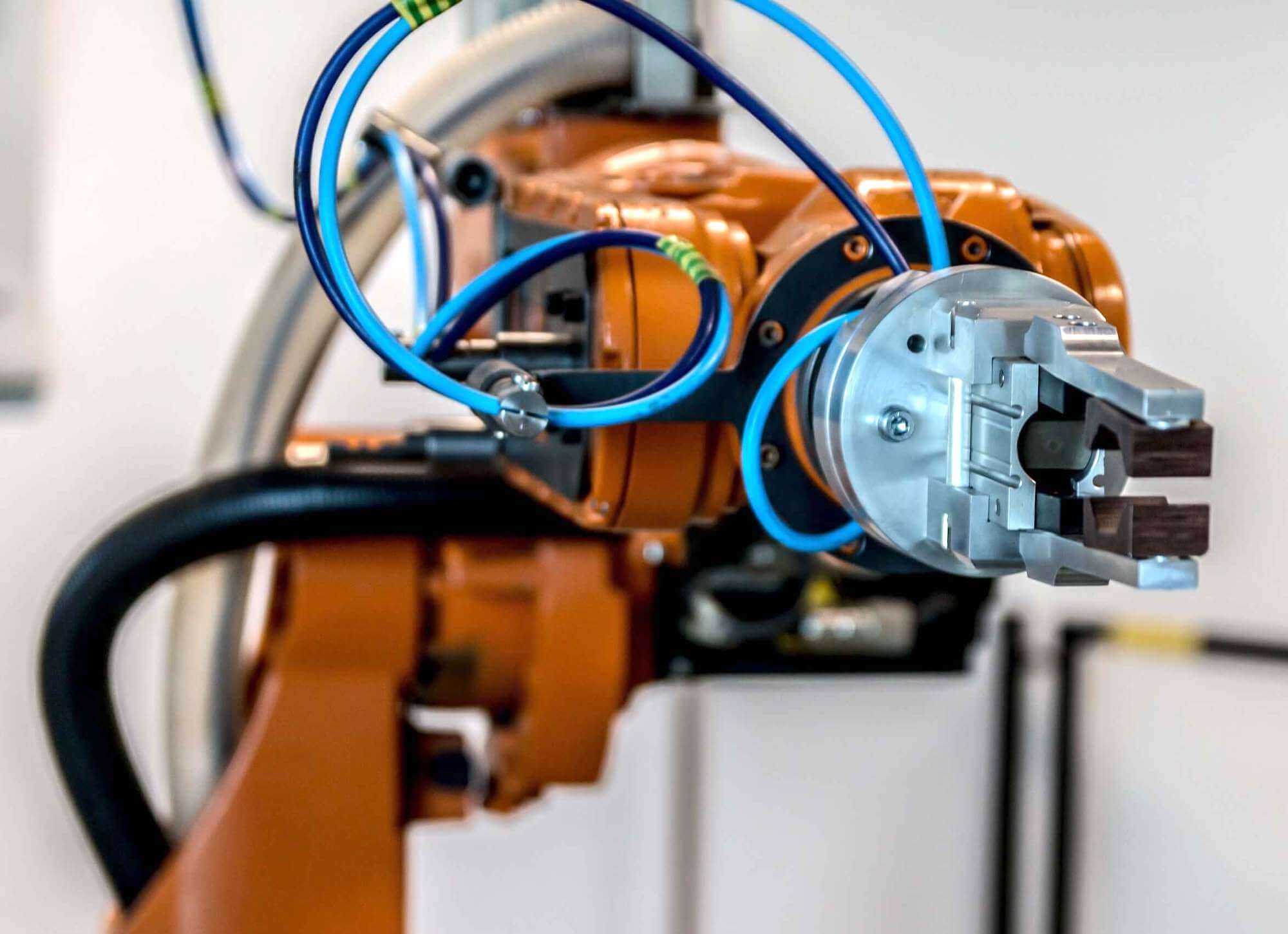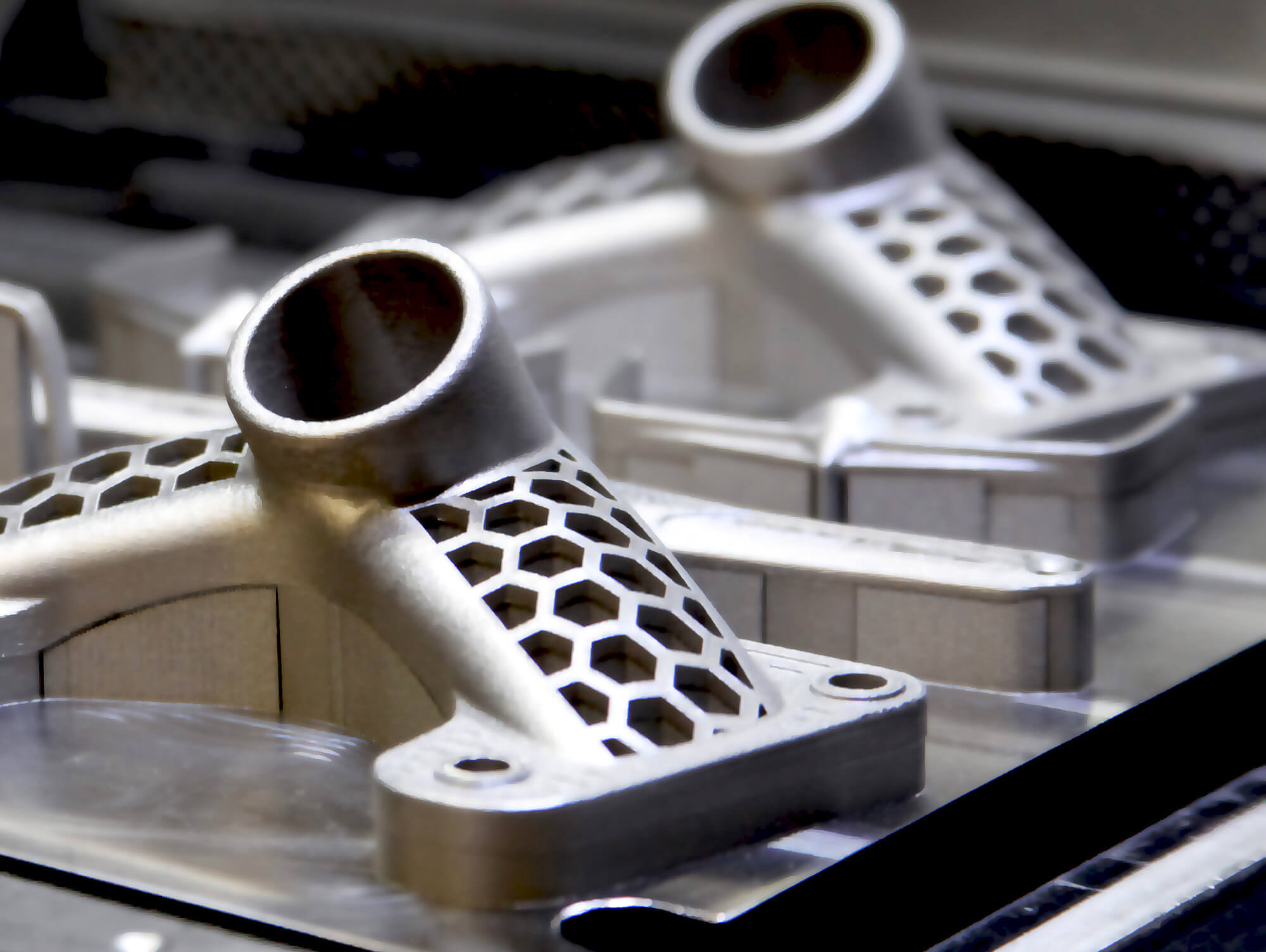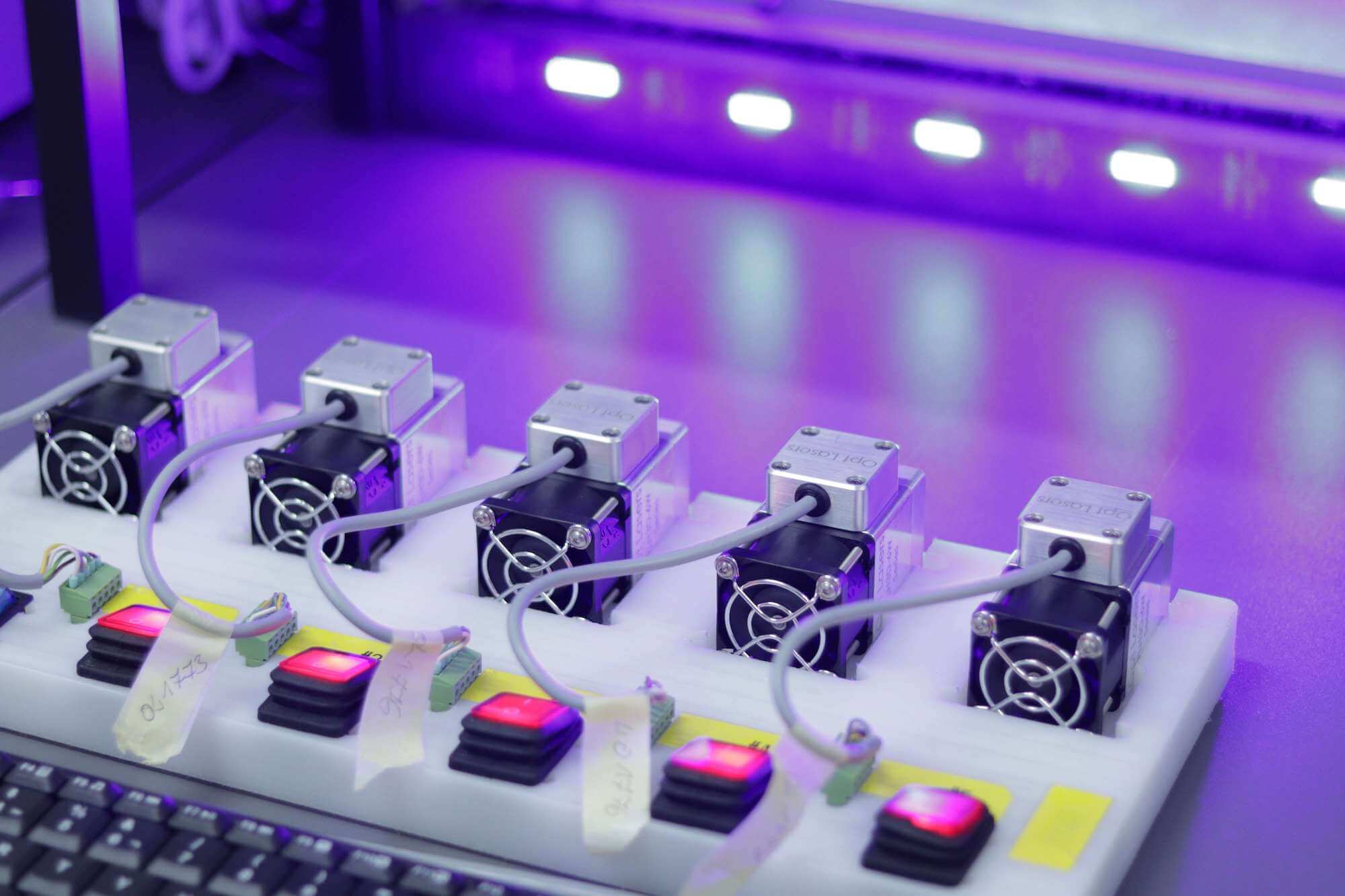Our 3D printing & additive manufacturing capabilities
To help ensure the success of your project, we have numerous 3D printing technologies, including FDM, SLS, MJF + SLA, DLS, Polyjet + DMLS and MBJ. This range of technologies allows us to 3D print 70+ types of plastics, elastomerics and metals. Enabling engineers to target many applications, whether it is medical, industrial, or consumer.
3D printing thermoplastics capabilities
Fused Deposition Modeling (FDM)
A technology with large material selection, accuracy, and possibility to print large parts. Great for fast & low cost rapid prototyping.
Min lead time
2 days
General tolerances
± a single build layer thickness for the first mm, plus +/- 0.05mm for every mm thereafter
Max part size
609 x 914 x 914mm
Minimum feature size
0.89mm (but > 1.14mm is best)
Minimum wall thickness
• 1.19mm for parts < 356 x 406mm
• 1.52mm for parts > 356 x 406 - 914mm
Layer thickness
• 0.203mm for parts 249 x 208 x 208mm (Desktop)
• 0.254mm for parts < 356 x 406mm footprint (Industrial)
• 0.330mm for parts > 356 x 406 - 914mm footprint (Industrial)
Guaranteed tolerances
Selective Laser Sintering (SLS)
A technology for industrial 3D printing that is inexpensive, hence popular. Great for functional prototyping & short-run production.
Min lead time
2 days
General tolerances
± 0.25mm for the first mm, plus +/- 0.05mm for every mm thereafter
Max part size
330 x 330 x 508mm (standard) 660 x 381 x 584mm (glass filled)
Minimum feature size
0.76mm
Minimum wall thickness
0.7mm (Nylon 12) - 2mm (Carbon filled Nylon 12)
Layer thickness
0.114mm
Guaranteed tolerances
Multi Jet Fusion (MJF)
A technology that produces highly accurate and durable parts at comparitively fast speeds. Great for functional prototyping & short-run production.
Min lead time
2 days
General tolerances
±0.305mm up to 102mm, plus ±0.076mm for every mm thereafter
Max part size
381 x 279 x 381mm (but 355 x 330 x 279mm is best)
Minimum feature size
0.51mm
Minimum wall thickness
0.30mm short walls on XY plane x 0.40mm short walls on Z plane
Layer thickness
0.102mm
Guaranteed tolerances
3D printing thermosets capabilities
Stereolithography (SLA)
A technology that produces extremely accurate and high-resolution parts. Great for visual prototyping.
Min lead time
2 days
Tolerance - XY plane
±0.127mm for the first mm, plus ±0.05mm for every mm thereafter
Tolerance - Z plane
±0.254mm for the first mm, plus ±0.05mm for every mm thereafter
Max part size
736 x 635 x 533mm
Minimum feature size - linear
0.51mm (but > 0.76mm is best)
Minimum feature size - radial
0.89mm
Minimum wall thickness
• 0.60mm unsupported walls
• 0.40mm supported walls (both sides)
Layer thickness
0.102mm
Guaranteed tolerances
Carbon Digital Light Synthesis (DLS)
A technology that produces parts with exceptional durability, resolution & surface finish. Great for functional prototyping & short-run production.
Min lead time
4 days
General tolerances
±0.127mm for the first mm, plus ±0.05mm for every mm thereafter
Max part size
101 x 101 x 152mm (standard) 187 x 116 x 325mm (custom)
Ideal part size
< 50.8 x 25.4 x 76.2mm (best production economy of scale)
Minimum feature size
1.0mm
Minimum wall thickness
0.76mm (walls, text, lattice features)
DLP Pixel Resolution
Approx 0.127mm square
Layer thickness
0.102mm
Guaranteed tolerances
PolyJet
A rigid photopolymer technology that produces high-detailed models. Great for flexible and multi material prototyping.
Min lead time
2 days
General tolerances
±0.1mm for the first mm, plus ±0.05mm for every mm thereafter
Max part size
490 x 391 x 200mm
Minimum feature size
1.3mm - for rigid 1.6mm - for rubber-like
Minimum wall thickness
1mm
Layer thickness
0.025mm
Guaranteed tolerances
3D printing metals capabilities
Direct Metal Laser Sintering (DMLS)
A technology that selectively fuses a fine aluminum or stainless steel powder. Great for metal prototyping & short-run production.
Min lead time
8 days
General tolerances
±0.13mm for the first mm, plus ±0.05mm for every mm thereafter
Max part size
250 x 250 x 250mm
Minimum feature size
0.75mm - for cosmetic features 1.5mm - for structural features
Layer thickness
0.03mm - 0.04mm (depending on material)
Surface roughness
150-400 µin Ra (depending on material & build orientation)
Infill
1
Guaranteed tolerances
Metal Binder Jetting (MBJ)
A technology used to make complex metal parts with excellent mechanical properties. Great for metal prototyping & short to medium run production.
Min lead time
8 days
General tolerances
0.8% – 2.5% shrinkage during cooling < 5% shrinkage of internal geometries (slots / holes)
Max part size
400 x 250 x 250mm
Minimum feature size
1.0mm
Minimum wall thickness
1.0mm
Layer thickness
0.10mm
Surface roughness
30 to 200 µin Ra (depending on material, build orientation & finish)
Density
95%+ for infiltrated, 98%+ for single alloy (density is homogeneous)
Guaranteed tolerances
What is 3D printing?
3D printing is an additive manufacturing process that builds 3D objects layer by layer, highly suited for prototyping and low-volume production of both plastic and metal parts. Numerous different 3D printing technologies exist, but the three primary types are fused deposition, selective laser sintering, and stereolithography.
While 3D printing has been around for decades, it has only been in the last decade that its development and use have accelerated, and this has also seen numerous technological achievements, including reduced layer heights, improved accuracy, and faster printing times.
Our cloud-3D printing manufacturing service provides engineers with the most essential 3D printing technologies to help accelerate project development times, reduce overall project costs, and provide the highest quality printed parts.
Our 3D printing materials
Whether you’re looking to create an IoT device, medical sensor, or industrial controller, our stock of over 70 3D printing materials will provide you with the perfect option. Instead of choosing a printing technology, the desired material is chosen, and this then dictates the printing technology used. For example, PLA and ABS will use FDM machinery, whereas metals will use selective laser sintering (SLS) systems.
3D printing thermoplastics materials
Fused Deposition Modeling (FDM)
| Material | Colors | Tensile Strength, Yield (XZ MPa-ZX MPa) | Elongation at Break (XZ%-ZX%) | HDT @ 66 psi (°C) |
|---|---|---|---|---|
| ABS-M30 | Black, Blue, Dark Grey, Ivory, Red, White | 32 MPa-28 MPa | 7% - 2% | 96 °C |
| ABS-ESD7 | Black (electrostatic dissipative properties) | 36 MPa | 0.03% | 96 °C |
| ABSi | Translucent Natural, Translucent Amber, Translucent Red | 37 MPa | 0.044% | 86 °C |
| ASA | Black, Dark Blue, Dark Gray, Light Gray, Green, Ivory, Orange, Red, White, Yellow | 27 MPa | 9% - 3% | 98 °C |
| Nylon 12 | Black | 49.3 MPa-41.8 MPa | 30% - 6.5% | 91.9 °C |
| PC-ABS | Black | 41 MPa | 0.06% | 110 °C |
| PC | White | 57 MPa-42 MPa | 4.8% - 2.5% | 138 °C |
| PC-ISO | Translucent Natural, White | 57 MPa | 0.04% | 133 °C |
| PPSF | Tan | 55 MPa | 0.03% | 189 °C @ 264 psi |
| Prototyping PLA | Black, Blue, Red, White | 50 MPa-37 MPa | 2.9% - 1.9% | 55 °C |
| ULTEM 9085 | Black, Tan | 47 MPa-33 MPa | 5.8% - 2.2% | 153 °C |
| ULTEM 1010 | Amber (Natural) | 64 MPa-41 MPa | 3.3% - 2.0% | 216 °C |
Selective Laser Sintering (SLS)
| Material | Other Names | Impact Strength, Notched (kJ/m²) | Elongation at Break (%) | Shore Hardness |
|---|---|---|---|---|
| Nylon 11 EX | Ductile plastic, PA11, Rilsan® Invent Natural | No break | 0.45% | 77D |
| Nylon 12 | Durable plastic, PA12, PA 2200 | 4.8 kJ/m² | 0.18% | 75D |
| Nylon 12, Glass-Filled (GF) | Stiff plastic, PA12 GF, PA 3200 GF | 4.2 kJ/m² | 0.09% | 80D |
| Nylon 12, Carbon-Filled (CF) | High-performance plastic, carbon-filled PA12, PA 602-CF, carbonmide | 5.3 kJ/m² | 0.04% | N/A |
| Nylon 12, Aluminum-Filled (AF) | Metallic gray plastic, aluminum-filled PA12, alumide | 4.6 kJ/m² | 0.03% | 76D |
| Nylon 12, Mineral-Filled (HST) | Heat-resistant plastic, mineral fiber-reinforced PA12, PA 620-MF | N/A | 3% - 5% | 75D |
| Nylon 12, Flame Retardant (FR) | Meets FAR 25.853 60 second burn specification, PA 606-FR | N/A | 0.24% | 73D |
Multi Jet Fusion (MJF)
| Material | Description | Impact Strength (XY, ZX kJ/m²) | Elongation at Break (XY, ZX %) | Shore Hardness |
|---|---|---|---|---|
| Nylon 11 | HP 3D High Reusability PA 11 | 6 kJ/m², 5 kJ/m² | 55%, 40% | 80D |
| Nylon 12 | HP 3D High Reusability PA 12 | 3.6 kJ/m², 3.5 kJ/m² | 20%, 15% | 80D |
| Nylon 12, Glass-Filled | HP 3D High Reusability PA 12 Glass Beads (40% GB) | 3 kJ/m² | 0.1% | 82D |
| Polypropylene (PP) | HP 3D High Reusability PP | 3.5 kJ/m², 3.0 kJ/m² | 0.2% | 70D (est.) |
| TPU 88A | BASF Ultrasint™ TPU01 | Partial break, No break | 220%, 120% | 88A |
3D printing thermosets materials
Stereolithography (SLA)
| Material | Description | Flexural Strength (MPa/KSI) | Elongation at Break (%) | HDT@0.46 MPa (°C) |
|---|---|---|---|---|
| Accura 25 | White, PP-like | 58 MPa/KSI | 0.2% | 63 °C |
| Accura ClearVue | Clear/Translucent, PC-like | 67 MPa/KSI | 0.07% | 46 °C |
| Somos Watershed Black | Black/Dark-Grey, ABS-like | 69 MPa/KSI | 0.15% | 50 °C |
| Somos WaterShed XC 11122 | Clear/Translucent, ABS-like | 69 MPa/KSI | 0.15% | 50 °C |
| Somos EvoLVe 128 | White, ABS-like | 70 MPa/KSI | 0.11% | 52 °C |
| Accura Xtreme Grey | Grey, ABS-like | 71 MPa/KSI | 0.22% | 62 °C |
| Somos NeXt | White, PP-like | 71 MPa/KSI | 0.1% | 57 °C |
| Somos ProtoGen 18420 | White, ABS-like | 71 MPa/KSI | 0.16% | 47 °C |
| Somos Taurus | Dark Gray, ABS-like | 74 MPa/KSI | 0.24% | 62 °C |
| Accura ABS Black (SL 7820) | Black (painted), ABS-like | 78 MPa/KSI | 0.13% | 51 °C |
| Accura Xtreme White 200 | White, ABS-like | 79 MPa/KSI | 0.2% | 47 °C |
| Somos WaterClear Ultra 10122 | Clear/Translucent, PC-like | 84 MPa/KSI | 0.07% | 47 °C |
| Accura 60 | Clear/Translucent, PC-like | 101 MPa/KSI | 0.13% | 55 °C |
| Somos ProtoTherm 12120* | Translucent Red, PC-like | 109 MPa/KSI | 0.04% | 126 °C |
| Accura 48HTR* | Translucent Amber, PC-like | 118 MPa/KSI | 0.07% | 130 °C |
| Somos PerFORM* | White, Ceramic-filled | 146 MPa/KSI | 0.01% | 268 °C |
| Accura Bluestone* | Blue, Ceramic-filled | 154 MPa/KSI | 0.02% | 284 °C |
| * Requires post-thermal curing to achieve HDT. |
Carbon Digital Light Synthesis (DLS)
| Material | Description | Impact Strength (J/m) | Elongation at Break (%) | Shore Hardness |
|---|---|---|---|---|
| RPU 70 | Rigid polyurethane | 22 J/m | 1% | 80D |
| UMA 90 | Urethane methacrylate | 33 J/m | 0.17% | 86D |
| EPX 82 | Impact-resistant epoxy | 44 J/m | 0.059% | 89D |
| CE 221 | High temp cyanate ester (HDT 230C) | 15 J/m | 0.035% | 92D |
| FPU 50 | Flexible polyurethane | 40 J/m | 2.8% | 71D |
| EPU 40 | Elastomeric polyurethane | N/A | 3.1% | 68A |
| SIL 30 | Elastomeric silicone-urethane | N/A | 3.3% | 35A |
PolyJet
| Material | Description | Notched Impact Strength (J/m) | Elongation at Break (%) | Shore Hardness |
|---|---|---|---|---|
| Photopolymer - rigid | VeroUltra™ Black (RGD865) + VeroUltra™ White (RGD825) + VeroUltraClear Component (RGD820) + VeroClear (RGD810) | 19 - 25 J/M | 7% - 12% | 83D - 86D |
| Photopolymer - rubber-like (digital rubber) | Agilus30 + Vero | N/A | 185% - 230% | 26-28A, 35-40A, 45-50A, 57-63A, 68-72A, 80-85A, 92-95A |
| Multi-material, multi-color (digital material) | Combination of 2+ PolyJet materials | Varies | Varies | Varies |
3D printing metals materials
Direct Metal Laser Sintering (DMLS)
| Material | Description |
|---|---|
| Aluminum AlSi10Mg | Lightweight aluminum alloy instead of machining complex geometries |
| Stainless steel 17-4 | Fully-dense metal, hardness 40 HRC, heat treatable |
| Stainless steel 316/L | Fully-dense metal, superb corrosion resistance, meets requirements of ASTM F138 |
Metal Binder Jetting (MBJ)
| Material | Description |
|---|---|
| X1 Metal 420i™ | A 95%+ dense matrix metal composite material composed of 60% 420 stainless steel and 40% bronze infiltrant. Good mechanical properties and excellent wear resistance. Its properties behave similarly to 4140 steel. |
| X1 Metal 316i™ | A 95%+ dense matrix metal composite material composed of 60% 316L stainless steel and 40% bronze infiltrant. Good mechanical properties and excellent wear resistance. 316i is easier to tap and post-machine versus 420i. |
| Single alloy 316L stainless steel | A 98%+ dense metal with superb corrosion resistance, and excellent feature details. |
How does software-accelerated manufacturing work?
The speed at which technology is advancing can make it difficult for engineers to keep up with the latest manufacturing trends while also requiring engineers to increasingly make more complex design decisions when considering how their product will be manufactured. To help engineers with this, software-accelerated manufacturing eases the burden of design and manufacturing designs by shifting this complexity to our software-driven services.
At the same time, our online quotation tools for 3D printed parts enable engineers to get prices for their designs at much faster rates compared to traditional ordering techniques. Not only does this reduce the time taken to get parts manufactured, but it allows engineers to make design iterations much faster, thereby saving money spent on R&D.
Finally, our software-driven services for 3D printed parts allow engineers to quickly scale their projects, whether it is a single part or one thousand. Thus, engineers moving from prototypes to finalized designs can use the same software platform without making any changes to their design or process.

How much do 3D printing services cost?
Because of the many different factors that can affect the price of a 3D printed part, there is no one simple answer for the price of a 3D printed part. However, what can be said is that the price of a 3D-printed plastic part is a fraction of the cost of a plastic-injected molded part when ordered in low volumes (considering that molds can cost well over ten thousand dollars).
The same applies to 3D-printed metal parts when compared to CNC and cast parts. The additive manufacturing technique used to manufacture metal parts with a 3D printer results in no waste, and the lack of a tool head reduces the running costs of a 3D metal printer, whereas a CNC requires frequent tool changes, while a metal cast requires a new mold with every cast.
As such, 3D printing remains one of the most price-competitive manufacturing techniques for prototypes and low-volume manufacturing. This is especially true for industries such as IoT where development times need to be minimized, and medical industries, where order quantities for prototypes are typically very small.
However, parts that require extreme precision will fare better with CNC machining, and those that require to be purchased in the thousands can take advantage of the fast product speed of plastic injection molding.
Quality, at speed, guaranteed.
No matter if a print is being used as a prototype or as a market-ready product, every 3D printed part that we produce is made to the highest quality standards, conforming to our strict set of capabilities.
At the same time, our 3D printing services provide engineers with a rapid service that can produce parts far quicker compared to other manufacturing methods including injection molding.
Furthermore, all 3D printed parts manufactured by Ponoko come with a 365-day guarantee which not only demonstrates our confidence in our 3D printing capabilities, but also provides engineers with confidence in their designs.
What parts are good for 3D printing?
Generally speaking, most 3D parts are ideal for 3D printing, especially for low-volume production runs and prototypes. While the manufacturing time for 3D printed parts is longer than that by injection molding, the lack of molds and use of additive manufacturing means that there is minimal waste and no tooling charges, which can be extremely expensive for other production methods.
The high strength of 3D printed parts makes 3D printing ideal for mechanical fixtures such as brackets, mounts, and enclosures. If plastic parts are made thick enough, even washers and large bolts can be printed, but engineers who require stronger parts can turn to metal powder 3D printing.
3D printing is also great for printing low-volume production runs of parts that need customisation. While CNC and injection molding can be used to create custom parts, their high setup costs only make them viable for mass production, and so 3D printing offers engineers an inexpensive custom part manufacturing service. For example, a new IoT product that requires a specific type of enclosure bracket or fitting can do well to use 3D printing if only a few hundred are being produced (this is also ideal for industries where market-ready products are highly specialized and see small scale volumes).
What applications can Ponoko 3D printed parts be used in?
3D printed parts have many applications across numerous industries, including medical, automotive, aerospace, robotics, industrial and electronics, but are especially popular in the prototyping and R&D industries due to their rapid build time and ability to create complex 3D parts. For example, the electronics industry heavily relies on 3D printing for developing and testing enclosures as injection molding is far too expensive for individual prototypes. This is also true for those with aero and fluid dynamics whereby small-scale models can quickly be printed and tested in wind tunnels. Uses include:
- Aerodynamic model testing in wind tunnels
- Electronic enclosures
- Mechanical fittings
- Robotic frames
- Visual aids
- Injection molding tools
- Jigs
- Fixtures
- Durable end use parts

Fused Deposition Modeling (FDM 3D printing)
Every single day, hundreds of thousands of engineers are taking advantage of FDM printing to quickly prototype parts as well as provide engineering teams with a physical part to examine. However, some engineers are leveraging FDM 3D printing for heavily customized parts in low-volume industries. For example, numerous industrial equipment manufacturers are using 3D printing to create robotic arm attachments, which not only allows it to tailor parts to each customer's needs but also provides a low-cost replacement option that allows heads to be rapidly recycled and replaced. Thus, FDM 3D printing can be used for far more than just prototypes and could even become a critical manufacturing technology of the future.

Direct metal laser sintering (DMLS 3D printing)
Metallic parts are essential in the field of engineering thanks to their high strength, machinability, and ability to withstand large temperatures. But for all the advantages that metal brings, it also presents some serious challenges including high costs of machining and the need for molds in castings. However, direct metal laser sintering offers engineers the ability to create metallic 3D structures using an entirely additive process which not only reduces the costs, but allows for extremely intricate and complex designs that would typically be impossible to machine using traditional methods. Now, many engineering companies involved in the automotive, industrial, and commercial industries are turning to direct metal laser sintering for both prototyping and low-volume production needs.

Stereolithography (SLA 3D printing)
While 3D printing technologies such as FDM and SLS provide engineers with a cost-effective solution, the rough surface finishes caused by large layer heights can be problematic, especially for parts that have intricate details. For such parts, many engineers turn to SLA printing thanks to the ability to print with small layer heights, the fast-printing speeds, and the numerous material choices. One such application for SLA is prototyping miniature models before mass production via plastic injection molding. Another application for SLA printing is in high-precision industries including lasers and optics thanks to the precision offered by SLA.
Why you can trust Ponoko for 3D printed parts
When it comes to custom manufacturing services, Ponoko has many years experience, manufacturing over 2 million parts for more than 33,000 customers. Not only do we have extensive manufacturing experience, but we also work closely with numerous high-end engineering customers in fields such as medical, aerospace and automotive, where precision and reliability are essential.
Additionally, Ponoko has vast experience in manufacturing parts used during early product development stages where design confidentiality is critical. Our strong data protection practices ensure that all designs and parts are secured from unauthorized access, which helps to secure intellectual property at the most vulnerable point of a product’s development.
3D printing FAQs
What kinds of 3D printing technologies exist?
How does 3D printing differ from other manufacturing processes?
What advantages does 3D printing offer?
What disadvantages does 3D printing introduce?
Is 3D printing cheap?
How fast is 3D printing?
What materials can be 3D printed?
What design considerations should I take when designing 3D parts?
What 3D printing technology is best for my part?
How does the 3D printing order process work?
Is buying a 3D printer worth it?
Want something else? Check our other services...
3D printing is a fantastic manufacturing technology, but just like how most manufacturing technologies have both advantages and disadvantages, 3D printing is not always the best choice. For those needing large-scale volume production, our injection molding processes can be used for numerous materials, including plastic, elastomers, and metal, while our laser cutting services can provide 2D parts from a selection of 250+ curated engineered materials.
Finally, for those needing an electronic circuit (which commonly goes with 3D printed and injection molded parts), our PCBA services will not only fabricate your PCBs, but source all components and provide full automated manufacturing. Thus, our digital manufacturing services combine all engineering production technologies for an entire product under one roof.